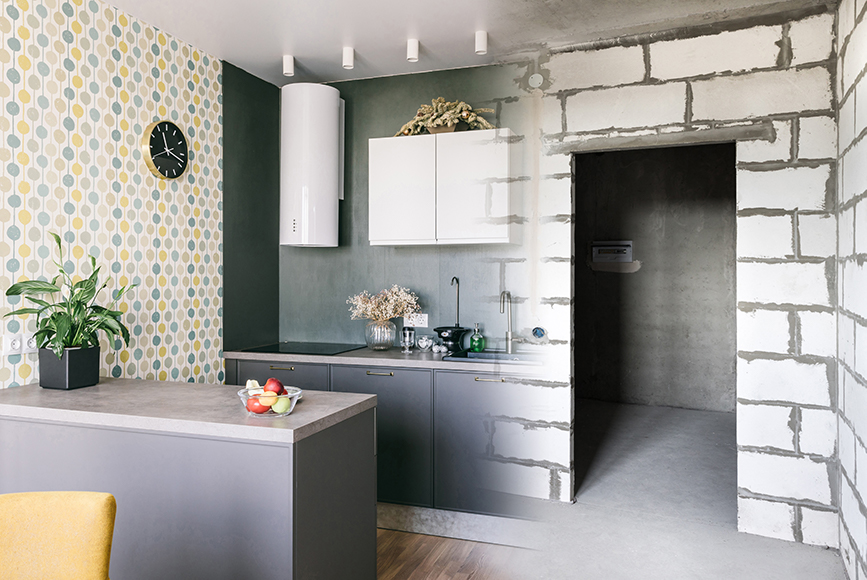As a Loan Officer who specializes in renovation financing I wanted to illustrate how the HomeStyle® renovation mortgage from Fannie Mae can be helpful in funding the purchase and remodeling of a historic home. Or if you are an owner of a historic home this loan can be used to provide funding for a renovation.
This loan is helpful more than any other loan because often a historic home needing restoration is not in a condition where it can be safely lived in due to age or neglect. If that’s the case a regular mortgage would not be allowed on a dangerous home that was deficient or not able to function properly. HomeStyle® solves that problem as the home does not need to be livable at all. In fact it can be falling apart or dangerous to even visit. This mortgage will provide funds to restore the home completely and use the future, as finished value, the home will have when completed as the basis to approve the mortgage. All while the house is still in a diminished condition. HomeStyle® is also very useful to finance any dangerous or damaged home such as a foreclosure.
As an example recently a client called me to explain he has become the owner of a 19th century Chicago townhouse. A home that has sat vacant for many years and has fallen into complete decay. The home cannot be inhabited currently since it is so deteriorated. It was built in the 1880’s in Chicago as a luxury home for a 19th century family. The client needs some $300,000 to restore the home and rebuild the interior with all new electric, plumbing, HVAC, baths, kitchen, partition walls, windows, new water & gas lines, etc. When completed the home may be eligible for a historic home property tax abatement to keep property taxes low for some years to come.
The HomeStyle® process involves the services of a Construction Consultant assigned by the lender who will inspect the home and develop a Project Review Plan or really a document defining the full scope of repairs that must be done in each area like masonry, electric, roof, plumbing, carpentry, etc. This will include the clients selected finishes like kitchen cabinets, interior doors, lighting, tile, flooring, etc. Once this Project Plan is developed the client can use it to solicit proposals from General Contractors to execute the work within the given loan size the lender has approved. HomeStyle® has one important regulation and that is the actual repair budget cannot exceed 50% of the future, as finished value of the home. This is meant to be a check on over improving the home for the area. In this example, meaning if the future, finished value of the home is found to be $600,000 then the HomeStyle® rehab budget is limited to half that or $300,000. The home is appraised using the written Project Plan & budget.
A second HomeStyle® example is a home in the suburbs also from the 19th century. A Buyer called me asking if there was a way to finance the purchase of this house. The house has already been perfectly restored except that no kitchen was ever re-installed. The house has been used for some years by a non-for-profit as a museum and offices. All it lacks is a working kitchen. A regular loan was denied because technically the house is not viewed as inhabitable if there is no kitchen to prepare food.
HomeStyle® will solve that problem by allowing the Buyer to add rehab dollars for a new kitchen in his purchase loan with as little as a 5% down payment. The down payment will be calculated off the sum of the purchase price plus rehab dollars needed. For example if purchasing for $400,000 and needing $30,000 for a nice kitchen, the total is $430,000. Then 5% down payment off that is $21,500. The rest is the mortgage.
The home will be appraised as if the kitchen were already installed using the General Contractors Project Plan with all the details of the new kitchen design clearly defined for the Appraiser to consider and find similar homes to assess value.
Additionally HomeStyle® will allow up to 6 months of house payments to be added to the loan to account for the time the house is not inhabitable yet payments have to begin. This helps everyone as the owner may have a living expense elsewhere and cannot afford two housing payments at once.
The HomeStyle® loan is a 30 year term loan. This makes it less costly than any other type of construction loan which may have a much shorter term to repay or require a second loan to be done after construction. Plus it is always based on the future, finished value the home will have when all restoration is complete. This is the only loan that allows the future value of the property, with all improvements to be done later, to be considered prior to work being done. That one aspect is perhaps the best advantage a HomeStyle® rehab loan offers.
I hope this post has been helpful and encouraging to those that may have thought a Renovation project was too complex or beyond their ability to manage. My intent is always to inform, educate, and generate discussion. Please call me or email me directly or visit my website for more information on renovation loans. I welcome your comments and questions!

